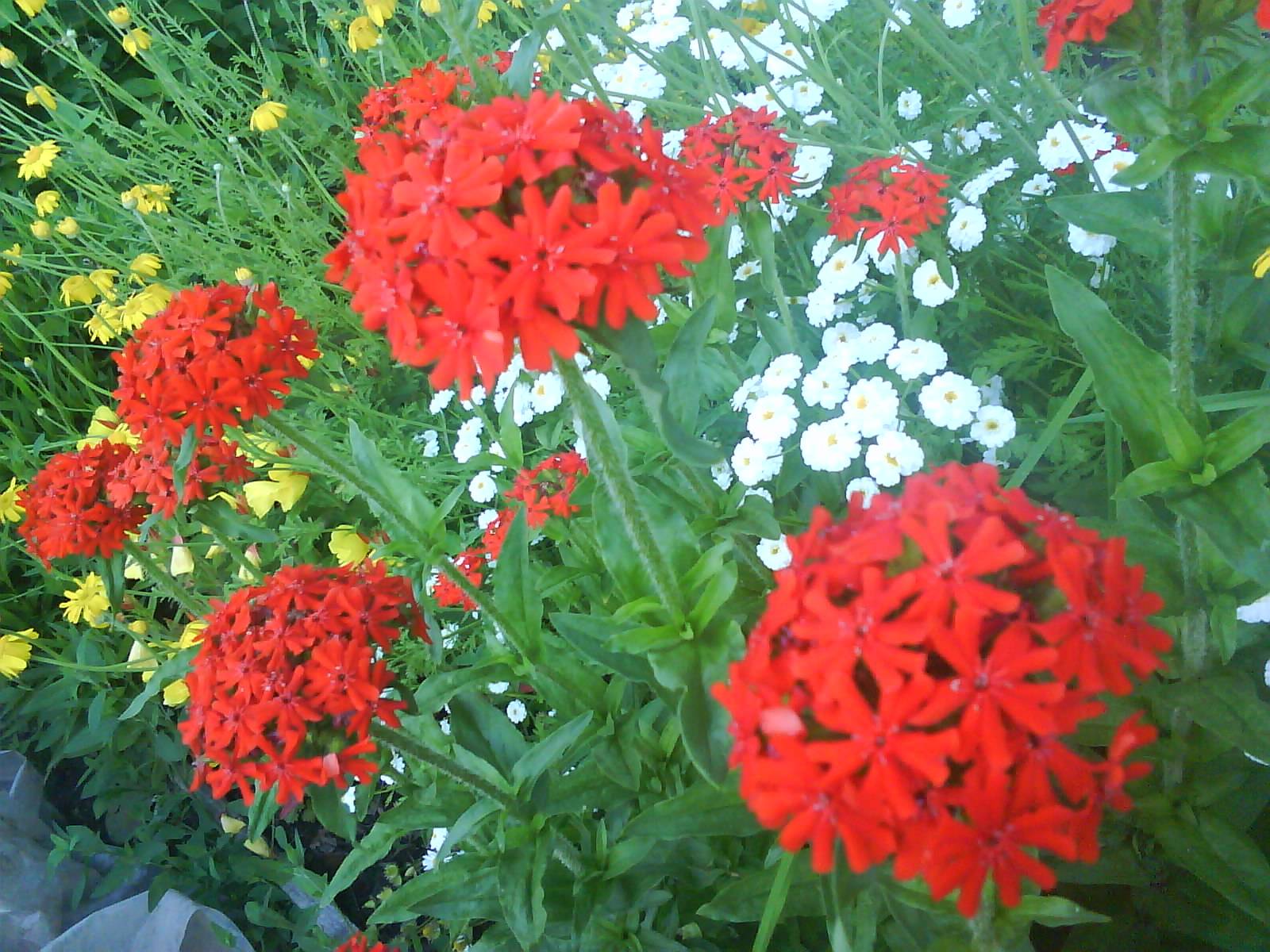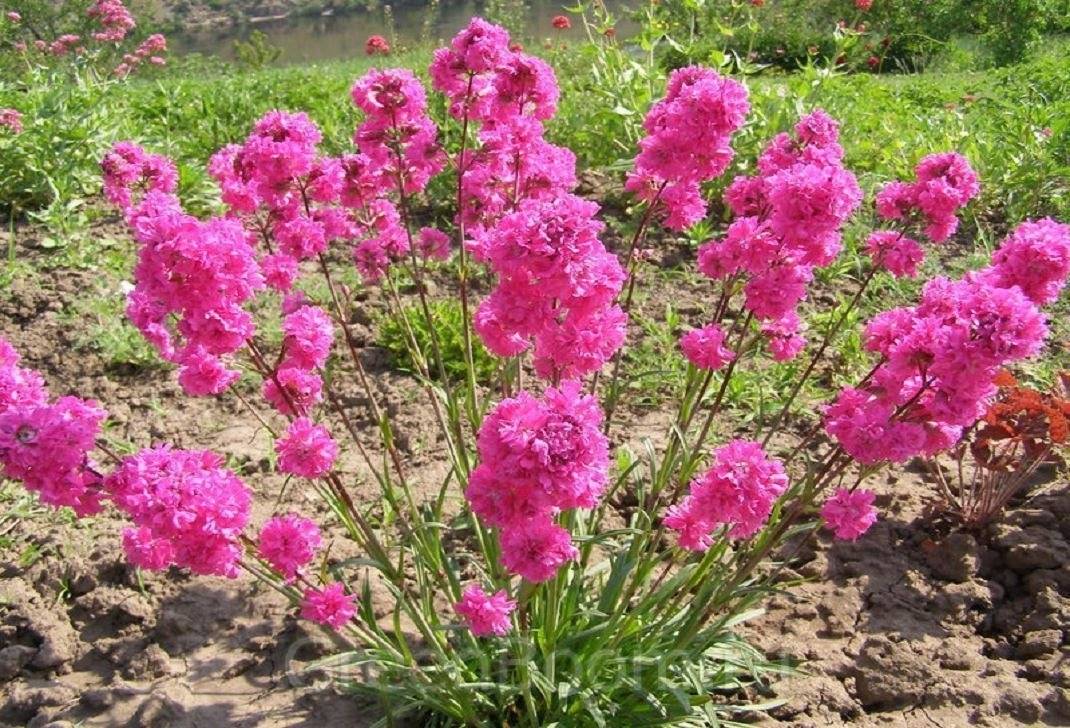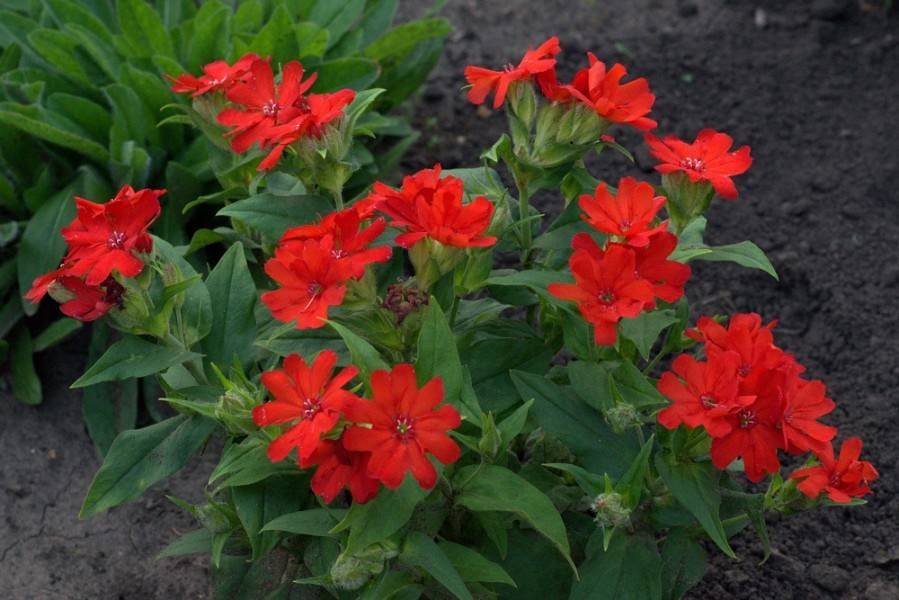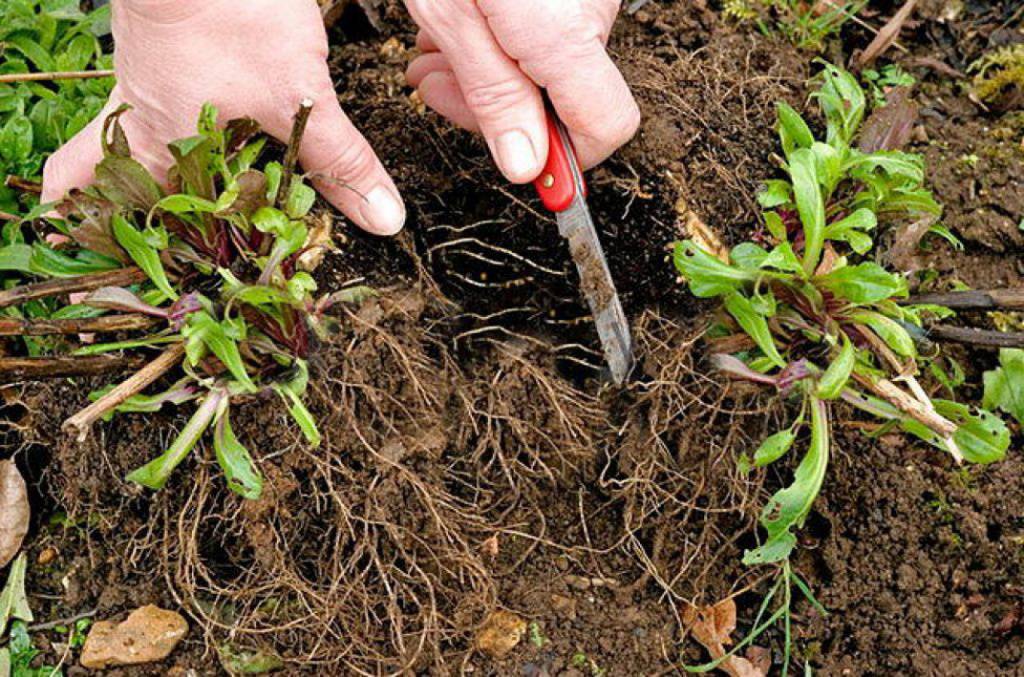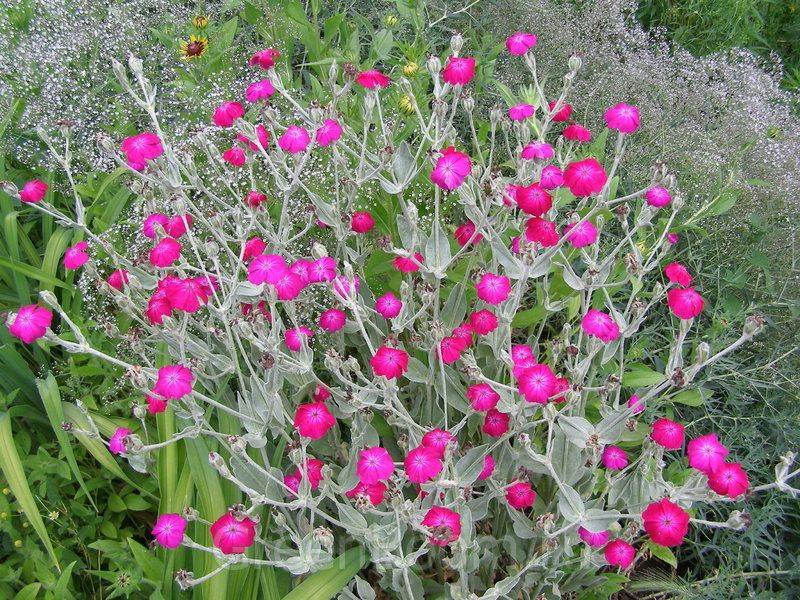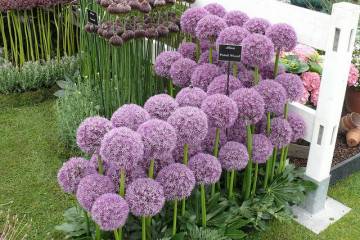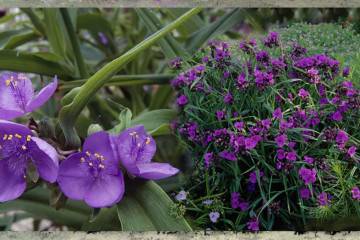Likhnis perennial - planting and care in the open field
Content:
- Description of the plant
- Lychnis species
- Lychnis chalcedony (Lychnis chalcedonis) or Lychnis Zorka
- Lychnis viscaria (Viscaria vulgaris, Lychnis viscaria, Silene viscaria)
- Lychnis alpine (Lychnis alpina, Viscaria alpine, Steris alpine)
- Lychnis arkwrightii
- Lychnis crown (Lychnis coronaria, Lychnis coriacea)
- Cuckoo adonis (Coronaria flos-cuculi)
- Lychnis sparkling (Lychnis fulgens)
- Lychnis haage (Lychnis haageana)
- Lychnis Jupiter (Lychnis flos-jovis, Coronaria flos-jovis)
- The most popular varieties among gardeners
- Reproduction of perennial lychnis
- Features of care in the garden
- Growing problems
- Use in landscape design
Lychnis flower among the inhabitants is called "dawn" or "adonis". The popular name is due to the unusually bright color of the inflorescences. Translated from Latin, the name of the plant means "lamp". Biologists attribute it to the Clove family. Sometimes in the scientific literature they are referred to as the Smolevka genus.
Description of the plant
Perennial lychnis is a flower common in the northern half of the globe. It grows in meadows, glades, mountain slopes, along the banks of water bodies. It pleases with its flowering in June-July. It has an erect, rough stem, covered with hairs. Its height is up to 1 meter. On the sides are paired rough lanceolate leaves. At the root, they form a lush rosette.
The shoot is crowned with a large inflorescence in the form of a shield, consisting of numerous flowers up to 2-4 cm in diameter each. The flowers are bisexual. The shape of the flower is a tube, with petals opening at the end and short stamens. Colors - red, crimson, white, violet shades. The aroma is light, pleasant.
After pollination, a capsule fruit with brown seeds is formed. When it opens, the seeds spill out. They are able to survive frost in the soil.
Lychnis species
In nature, there are more than 30 species. About 15 are popular among gardeners. The most popular of them are presented below.
Lychnis chalcedonis (Lychnis chalcedonis) or Lychnis Zorka
Bush 0.8-1 meter tall with several shoots and red, pink or snow-white lush inflorescences up to 10 cm in diameter. It blooms in June-July. Leaves are lanceolate or oval. Flowers are ordinary or double, bilobed. Resistance to frost allows it to be grown in Siberia, Mongolia, and the European part of Russia.
Lychnis viscaria (Viscaria vulgaris, Lychnis viscaria, Silene viscaria)
A voluminous bush with numerous shoots 0.4-1 meter high. The top of the stem is covered with a sticky liquid that attracts insects. Therefore, it received a second name - tar. 5-7 flowers form panicle-shaped inflorescences. Color - raspberry, milk. Found in central Europe, southern Siberia, the Caucasus. The most famous varieties are Lichnis Rosetta, Flore Pleno.
Lychnis alpine (Lychnis alpina, Viscaria alpine, Steris alpine)
Miniature bushes 0.1-0.2 meters high, with up to 10 shoots creeping along the ground with small raspberry inflorescences. Frost and drought resistant. Grows on sparse rocky soils. Used in compositions for alpine slides. In wildlife it occurs in the tundra, forest-tundra, mountain alpine meadows. The most famous variety is Lara.
Lychnis arkwrightii
Differs in green leaves in the shape of hearts, orange-red flowers up to 3 cm in diameter. Inflorescences are small, consist of 3-5 flowers. The height of the bush is up to 0.3 meters. Blooms in June-August. Brings variety to flower beds and alpine slides. The most common variety is Vesuvius Lichnis.
Lychnis crown (Lychnis coronaria, Lychnis coriacea)
A lush bush with silvery shoots. Branches well. At the end of each branch, a single flower of crimson or snow-white color appears. The height of the silvery lychnis is up to 1 meter.
Planting and care in the open field of crown lichnisa has a number of advantages:
- not afraid of cold weather;
- blooms from June to late autumn;
- unpretentious in care
- grows on depleted soils;
- suitable for flower beds and single plantings.
Notable varieties are Mysterious Island, Angela Blanche.
Cuckoo adonis (Coronaria flos-cuculi)
The bush is high, rare. Height of brownish stems up to 1 meter. Each of them has narrow, lanceolate, opposite leaves. Their size decreases the closer they are to the inflorescences. The flowers are pink or snow-white, rare, large, up to 40 cm in diameter. They are divided into 4 petals, which are lowered to the bottom. Found in the European part of the continent. Famous varieties - Alba, Nana, Rosea captivity.
Lychnis sparkling (Lychnis fulgens)
The bush is about 0.6 meters high. Shoots are green, erect with oval lanceolate leaves. Shield-shaped inflorescences are formed by large scarlet flowers with 4-5 narrow petals. Blooms in July-August. In the wild, it grows in China, Japan, and the Far East.
Lychnis haage (Lychnis haageana)
A small shrub 0.5 meters high with oval pointed leaves. Inflorescences are medium-sized, with scarlet flowers with a diameter of 5 cm.It does not occur in wildlife, since it is a hybrid variety. Blooms in late June-July.
Lychnis Jupiter (Lychnis flos-jovis, Coronaria flos-jovis)
The bushes are rare, up to 0.8 m high. The stems are covered with many lancet-oval leaves. Inflorescences are purple, snow-white. In wildlife, it grows on the slopes of the Alps.
The most popular varieties among gardeners
A beautiful, unpretentious flower is popular in parks, in flower beds, alpine slides, in pots and flowerpots. The following is a description of some varieties that occupy a worthy place in landscape design.
Vesuvius
A low-growing bush (up to 40 cm) with brown leaves and orange-red flowers. Looks great in flowerpots, group and single plantings. Loves good watering in summer. Requires shelter for the winter.
Rosetta
A high meter-long bush with rough stems, lanceolate pointed leaves. The inflorescences are large with double carmine-red flowers.
Maltese cross
Lychnis red is distinguished by expressive large inflorescences. The shape of the flower resembles a cross. Blooms for about a month.
Smolka
Received this name because of the sticky liquid present at the top of the shoots and attracting insects. Viscaria view. Has snow-white or pinkish inflorescences in the form of a panicle.
Adonis
Tall shrub with crimson flowers divided into 4 thin lobes.
Nana
There is a dense rosette of leaves at the base of the stem. From it stems up to 90 cm high extend. At the end of the stem there are bright pink inflorescences with a diameter of 4 cm. It begins to bloom at the end of May.
Alba
Variety of the species Kukushkin Tsvet. Grows up to 1 meter in height. It has snow-white flowers.
Reproduction of perennial lychnis
There are several ways to get new bushes - planting by seeds, dividing the bush and cutting.
Seed propagation
The fruit of the bush is a box filled with seeds. They are planted in moist soil warmed by the sun in spring or autumn. Sowing depth - 1.5 cm. The sowing site is covered with foil. The first shoots appear after 2-3 weeks. Like any seedlings, it is watered 1-2 times a week, hardened daily for 2 weeks, increasing the time under the sun from 5 to 60 minutes. Loosening the soil, removing weeds. After the appearance of 3-4 leaves, they are dug up, dived and transplanted to a permanent place. Lychnis grown from seed will bloom in the second year.
Dividing the bush
In the spring after warming up the soil or in the fall, a month before the cold weather, 3-4 shoots are separated from the adult bush along with the root. The separated bush is planted in a permanent place.
Cuttings
At the beginning of summer, a stalk 15-20 cm long is cut from a young shoot.Its sections are treated with activated carbon, immersed half the length in the soil prepared for planting under a film, and watered. After the appearance of roots and young shoots, the bush is planted in a permanent place.
Features of care in the garden
Lychnis grows well and blooms profusely in well-lit areas. Loves light nutritious non-acidic soils. It does not tolerate waterlogged soil, therefore, it cannot be planted in lowlands near reservoirs. Without drainage and in conditions of high humidity, the roots rot, the bush dies.
The blooming period of the flower falls on the end of May-July. At this time, it is regularly watered. The next day after watering, the soil is loosened, mulched, freed from weeds.
Fertilization is carried out during planting, during the period of active growth, before wintering. To do this, add 2 tablespoons of superphosphate and potassium sulfate to 10 kg of humus. The mixture is applied under the flower bushes.
Lichnis bloom
It usually opens in early summer, blooms for 1 month. If wilted buds are removed in time, the flowering time will be extended by 2 weeks.
The inflorescence of most lychnis is a scutellum with densely spaced flowers with 4-6 carved petals. But there are panicles or dichazial inflorescences.
Growing problems
Flower care is not cumbersome. The bush has Siberian immunity, but sometimes it can get sick and be affected by pests.
| Negative factors, diseases, pests | External signs of a bush | Treatment methods |
| Little sunshine | Grows slowly, does not bush well, inflorescences are weak and sparse | Transplant, remove blackout |
| Abundant watering, stagnant soil moisture, root rot | It blooms poorly, rust appears on the leaves, stains | Reduce watering, transplant, thin out the garden, equip drainage, treat the roots and shoots with copper-containing preparations |
| Neighborhood with tall bushes | Growth slows down, rare inflorescences | Transplant, protect from unfavorable neighborhood |
| Aphid | It blooms poorly, the leaves are deformed | Treat with fungicides, tobacco decoction |
| Leaf roll | Rolled leaves, cobweb on flowers | Pickle with fungicides |
| Slobbering penny | Small caterpillars suck out the juice, the bush dries up, grows poorly, withers | Treat with drugs, soapy water, tobacco broth |
Use in landscape design
A beautiful decorative perennial revives flower beds, flower beds, alpine slides, flowerpots. It can be planted along sidewalks, paths, benches. Grows well solo and in combination with roses, conifers, daisies, bells. Looks impressive against the background of decorative stones.
Lychnis is a decoration for any garden. Unpretentious in care, it gives it an elegant look and creates a cozy atmosphere.
